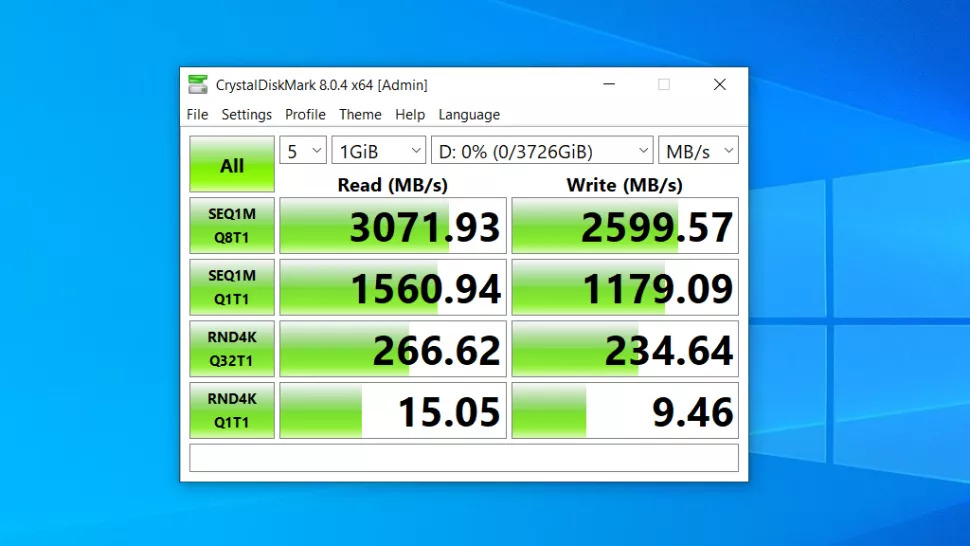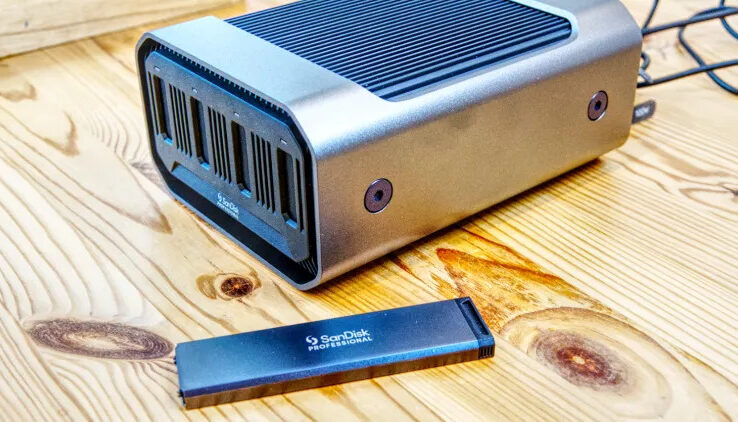SanDisk Professional Pro Blade Station Review
By Jennifer P
Mark Pickavance from TechRadarPro recently posted their review on the SanDisk Professional Pro Blade Station. An elegant concept that simplifies the process of transferring captured data to a system.
The Pro-Blade Station is intended for a specific scenario, but it may have broader applications.
What SanDisk created was an infrastructure around a custom enclosure for NVMe drives which they’ve called a ‘Pro-Blade SSD Mag’. These are refined metal-covered sticks with 1TB, 2TB, or 4TB capacities that completely encapsulate the NVMe module.
These then use two access mechanisms, the first of which is Pro-Blade Transport, a single blade that connects to USB 3.2 Gen 2×2 ports and can transfer data at a rate of 20Gbit/s.
The Pro-Blade Transport with a Pro-Blade Station SSD Mag inserted is thought to be connected to a data capture device, possibly a digital camera. Once data has been written to the Mag, it can be detached and connected to a computer via the Pro-Blade Station.
It can accept up to four Mags at once and then transfer the data to the computer at up to 40Gbit/s using Thunderbolt 3.
What you get for your money is an SSD transport system that protects the drives and delivers them to the computer working with the data in an easy-to-manage package.
SanDisk PRO-BLADE Station: Design
The SanDisk Professional Blade Station is built to the same high standards as the rest of the SanDisk Professional hardware we’ve seen.
The Pro-Blade Station is probably over-engineered in this context because it is unlikely to be handled roughly or have heavy weights placed on it.
However, it is designed to match the Transport and the Mags, and they may be subjected to rough handling or abuse in everyday use. The Mags are rated for a 3m drop and 4000lb crush force by SanDisk, but they don’t appear to be waterproof.
Because of the shape of the Mags, they can only be used in one orientation, and once inserted into Pro=Blade Station, a small LED above the slot indicates that they’ve been recognized, and this flashes when they’re in use.
Multiple transfers can be initiated when four Mags are connected at the same time, but they will not be any faster than if the contents were copied individually due to the speed limit imposed by Thunderbolt bandwidth.

SanDisk PRO-BLADE Station: Performance
What’s difficult to deny is that the Pro-Blade Station and SSD Mag combination is extremely fast over Thunderbolt 3 or 4, using the 40Gbit/s pathway.
We achieved 3,072 MB/s reads and 2600MB/s writes using CrystalDiskMark 8.0.4, making this the fastest external Thunderbolt SSD we’ve ever tested.
However, the OWC Envoy FX external SSD isn’t far behind these figures, and the limiting factor to speed is Thunderbolt bandwidth rather than the drives themselves.
The corresponding Transport component does not support Thunderbolt and instead employs USB 3.2 Gen 2×2. While this will work with cameras that support USB 3.2, very few support Gen 2×2, as this is a USB standard that was never widely adopted. Most cameras with USB support 5Gbps Gen 1 mode, which has a transfer speed of 500MB/s.
It’s understandable that they used USB because so few cameras support Thunderbolt, but it does highlight that the performance in this solution is weighted towards the transfer and editing end of the process rather than the capture point.

While the concept of creating an elegant workflow from camera to editing system is appealing, there are aspects of this solution that contradict the rapidly changing landscape of external SSD storage.
Soon, 4TB will seem insignificant, and cameras and other capture devices will need to support file systems other than FAT32 in order to connect to 16TB and larger drives.
Read the full review from TechRadarPro HERE
Learn more about SanDisk Professional PRO-BLADE HERE
Learn more about SanDisk Professional HERE

